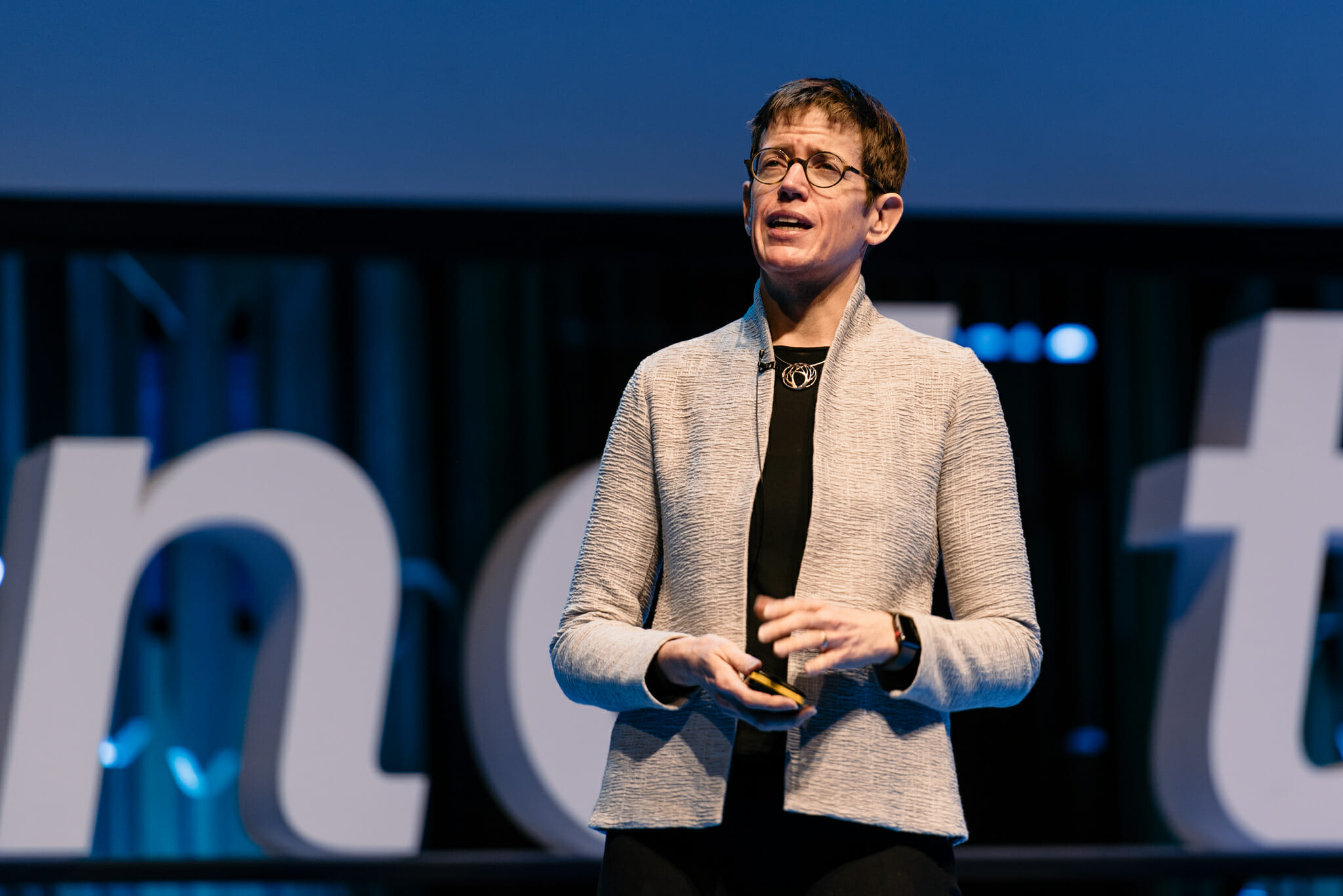The SaaS industry is undergoing a quiet revolution.
Competition is increasing, products are becoming less differentiated, customers are becoming less loyal, and the cost of acquiring new customers is rising year after year.
It’s within this landscape that retaining existing users has become just as important as acquiring new ones.
This article focuses on the ways that product managers should respond to this.
Acquisition vs Retention: A Shifting Landscape
In the past, when most software companies talked about growth or success, they thought about how many new users they gained. In fact, a 2016 survey by Price Intelligently of 1432 SaaS founders and C level executives revealed that almost 75% believed that adding more logos was the most important way to grow, compared to only around 20% that thought retaining customers for longer should take priority.
Yet at the same time, their survey also revealed that a 1% increase in retention had more than double the impact on a company’s bottom line compared to a 1% increase in acquisition. And as time goes by, there are many compelling reasons to believe that the gap between customer retention and customer acquisition will only grow.
Barriers to Entry Are Falling, Bringing More Competition
Bringing a product to market used to entail spending hundreds of thousands of dollars and taking on a lot of risk. Yet today, building a minimum viable product (MVP) and targeting a niche audience can be done for far less, removing a significant financial barrier from would-be competitors. In addition, to keep payroll costs low and flexibility high, companies are increasingly opting to hire freelancers and allow employees to work remotely. Whereas a full-time software developer in the U.S. can expect a salary of around $75,000, in less developed countries like India, Pakistan, and the Philippines, they can be hired for as little as $550 per month.
The result of this is that SaaS businesses face increasingly fierce competition, resulting in huge downwards price pressure. As prices fall, the relative value of keeping a customer has risen compared to the value of simply adding another, particularly if churn rates rise due to the increasingly competitive landscape.
Less Product Differentiation
Building a unique product (or even product feature) for any significant period of time has become near impossible as competitors quickly respond with their own solutions in order to compete. In sectors like email marketing software where core features like segmentation, a/b testing, and the like have become commonplace, companies have been forced to change their acquisition strategy to focus on building a unique brand position and audience, instead of a unique product. For example, ConvertKit pivoted its positioning to become email marketing software “for creators” in order to try to differentiate from large competitors like MailChimp and Get Response.
However, the problem persists. As customers begin to recognize that there are only relatively small differences in most products, they show a greater willingness to switch software and are becoming more price-sensitive, leading to increased churn and decreasing overall value in customer acquisition.
Rising Customer Acquisition Cost (CAC)
All of this taken together paints a stark picture. As it becomes hard to maintain defensible positions based on features alone, and almost every market is developing a richer competitor ecosystem, it’s only going to get harder to acquire and retain new customers.
Spending a large proportion of revenue on customer acquisition can only be justified in the context of a healthy (i.e. low) churn rate. However, as markets are becoming more saturated and the popularity of paid ads and content marketing is increasing, a study by ProfitWell has seen that CAC has risen by over 50% between 2013 – 2018.
As such, in order to command the same average profit per customer as in the past, and justify increased spending on customer acquisition, customer lifetime value (LTV) needs to increase. And that most commonly happens by retaining customers for longer.
What Does This Mean For Product Managers?
Against this backdrop, SaaS product managers would be well advised to place a higher priority on the aspects of their role that have the greatest impact on customer retention. While this could mean devoting more time, energy and resources towards these tasks, it can also mean improving existing processes, systems and company culture.

Below are a few suggestions for this:
Prioritise Key Product Engagement Metrics and Build a Framework
Traditionally, SaaS product managers have relied on churn rate (%) as the best way to measure and forecast user retention. However, as products become less differentiated, customers have become more comfortable switching to rival software. Accordingly, now more than ever, there’s a far greater importance on identifying customers that are at risk of churning, and preventing it before it occurs.
That’s why, instead of measuring and forecasting solely using churn rate, it’s becoming more important for product managers to look at customer retention through the lens of product engagement – the logic being that the more engaged that customers are with the product, the less likely they are to churn.
Product engagement can be measured in a number of ways, from average user session duration to the average number of key actions each user takes per month. The common denominator when it comes to product engagement metrics is that they focus on either the time each customer spends with the product or the actions they take with it.
Depending upon which product engagement metrics are being collected, most SaaS companies and their product managers would benefit from building a framework to track how it impacts customer retention over time (more about that here).
Below is an example of one such framework that incorporates both churn and product engagement metrics.
- Result-based KPI: Churn Rate (%) ↓
- Engagement Metric: Average number of key actions per user per month (% change) ↑
- Engagement Metric: Average user monthly session duration (% change) ↑
- Engagement Metric: Average number of logins per user per month (% change) ↑
- Engagement Metric: DAU / MAU (%) ↑
By introducing a framework to monitor both product engagement and retention, product managers can see how much of an impact product engagement is having on customer retention for their specific product – or if there are other more important factors at play.
Improve The Way You Collect and Act Upon User Feedback
A major reason why customers decide to leave is when the product is no longer providing what they want it to. For example, it could be that a vital feature or integration is missing, or that the product simply hasn’t evolved in the same way that competitors have.
While most companies typically have a good idea of what their customers want when they first launch their product, the priorities of their customers can change quickly. That’s why product managers always need to have their finger on the pulse. With limited development resources, they need to know which features should be added and which product changes will have the biggest impact on customer retention.
Here are a few ways that product managers could look to improve the way they collect and act upon user feedback:
- While most product managers do conduct customer interviews, most of these are done on an ad-hoc basis, when it would be more beneficial as a regular recurring event.
- Ensure that product feedback is collected in many different ways and that there is not a bias towards one particular collection method.
- Typically, product managers have prioritised which feedback is acted upon by how many users have requested it. But a bigger impact on company performance could be gained from looking at their total account value instead.
Systemise the Feedback Collection Process Across The Entire Company
It’s not just product managers that collect customer feedback, most of the business does.
From support tickets that the customer service team deals with to the social media interactions of the marketing team, there are numerous ways that internal teams gather important feedback on a daily basis.
But knowledge only has value when it’s shared and acted upon. For example, if lots of customers complain to the support team about a missing product feature, but the product manager is never informed, then it may never be added. Equally, if a product manager collects information from customer interviews but never passes it on to the marketing team, then the marketing message may be ineffective or unsuitable customers may be attracted to join. Both of these could negatively impact customer retention.
That’s why it’s critical for feedback from all channels to be collated and shared between teams and, in particular, with the product manager in order to make the best possible decisions. The problem is that in most companies there’s no system or process in place for regularly recording and sharing such valuable feedback internally. With this in mind, here are some solutions that product managers could consider:
- Setup regular calls with the leaders of every department (marketing, customer service etc) to talk about and share any pertinent feedback
- Have a written company process for how to gather, share and act upon feedback.
- Try a user feedback platform such as ProdCamp which make it easier to gather and share feedback across the company and amongst external stakeholders
More competition, customer acquisition costs rising, products becoming less differentiated, and impacting customer loyalty means engagement metrics will undoubtedly lead the dance. And building repeatable and scalable processes to collect and follow through with user Feedback is more vital than ever to stand out the crowd.








Comments
Join the community
Sign up for free to share your thoughts